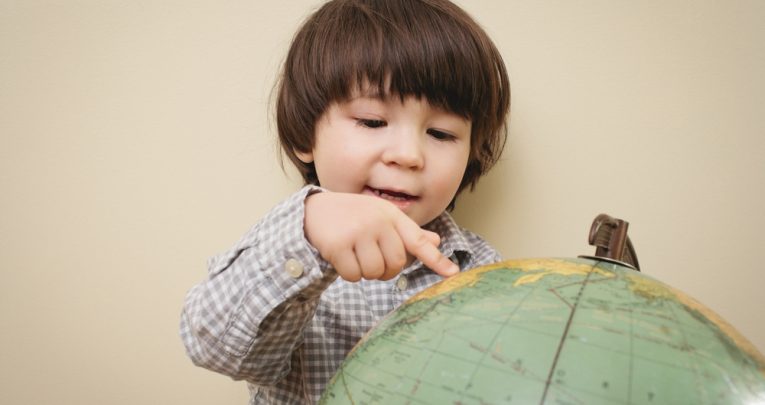Children Of The World – The Importance Of Cultural Inclusion In Early Years

Inclusive settings are well aware of the many cultural differences that can exist between families in the same community, says Kathy Brodie…

- by Kathy Brodie
- Consultant, trainer, author and founder of Early Years TV Visit website

Cultural inclusion in early years settings is fundamental if children are to have a sense of belonging.
We all have our own culture, from the traditions we observe to the way we dress and the foods we eat. Recognising and celebrating this has never been so important, especially with the EYFS requirements regarding ‘British values’ and the discussions that this has stimulated. We talk about the UK as being a multicultural society, and indeed it’s likely that many will personally experience more than one culture within the UK during a typical day, be it eating different foods, wearing, or seeing others wear different clothes.
However, there are also other, less obvious examples of cultural differences that might require some personal reflection. Attitudes towards children helping with jobs, for example, or the role of women in the home. Making assumptions can be hazardous, such as assuming, for instance, that everyone you meet of a certain ethnicity will always be of a certain religion.
Appreciate your own culture
One of the first steps towards building better cultural inclusion in your setting is to appreciate your own culture and how it impacts your practice. What are your values and beliefs? What sort of customs do you observe (such as Halloween, for example)?
It’s important to look beyond just festivals and religious celebrations, however, since these may be observed differently within families. Children may end up feeling more confused than included if there are discrepancies between the setting and home.
Finally, consider cultural distinctiveness when planning activities that are intended to be inclusive. Will they actually serve to single out individual children as being ‘different’, rather than encouraging inclusion?
1. Liaising with home It’s very difficult to capture all the nuances of a family’s culture on a registration form. Returning and refreshing your information with the family will both produce more information and let the family know that you care about and respect their culture, and want to include them in your setting.
This information might include significant events such as weddings, where children may have new, culturally specific experiences.
2. Your culture Your setting will have its own ‘cultural norms’ – certain expectations from both practitioners and children, such as saying ‘please’ and ‘thank you’.
Some traditions may have grown from experience over time, such as the best place to have circle time, while others may be the product of a conscious choice – such as the expectation that children will tidy up after themselves, or put their own coats on.
3. The local community The community in which children live will have a special culture of its own. This might include the average age of the children’s residential neighbourhood, for example, which can influence the type of shops or housing that the children are likely see.
Some communities will have a strong collective identity, and may well be involved with your setting. Others might place particular value on a local industry, such as car manufacturing. Appreciating and celebrating the local community’s culture within your setting will help children to feel welcomed and help to prepare them to be active members of that community when the time comes.
4. Interesting objects Sourcing artefacts with a cultural significance can often start conversations about culture on both a personal and more general level. This could also extend to gifts that have cultural significance, such as the horseshoe that’s traditionally given for luck.
From here, you can proceed to discuss why we believe that horseshoes are lucky, and how it was the wedding ceremony that first imbued the object with such significance.
5. Challenging stereotypes Inclusion and culture have close links to ‘British values’ in the EYFS – and in particular the aspects of ‘mutual respect’ and ‘tolerance for those with different faiths and beliefs’.
This type of inclusion includes challenging cultural stereotypes and encouraging children to think beyond obvious portrayals of different cultures in the media and elsewhere.
6. Using vocabulary Sometimes the thoughtful use of a particular phrase can help to include and show respect for children or families. For example, using terms such as ‘dual heritage’ demonstrates that you value the way different cultures have come together. As it becomes easier to move around the globe, an increasing number of children will have dual – or more – heritages to enjoy.
7. Different languages Difference in home language is something that should be supported. However, you should be aware that some families might be sending their children to your setting so they can learn English, and may not value your attempts to include their home language. To prevent any misunderstandings, don’t make assumptions and explain the many benefits of being bilingual.
Spot the difference
Cultural norms differ, so you may have to do some research to ensure you are able to support inclusion in setting life. Here are two you may not have considered…
• Children making eye contact with an adult whilst talking to them is an expectation in Western culture, whereas in some Latin American cultures it may be considered aggressive or disrespectful
• There are many different ways to eat food, including with your fingers – what a child is used to will affect how they approach mealtimes
Inclusion and Early Years Practice, edited by Kathy Brodie and Keith Savage, is available now from Routledge
Kathy Brodie is an Early Years Professional and trainer based in East Cheshire; for more information, visit www.kathybrodie.com or follow @kathybrodie










